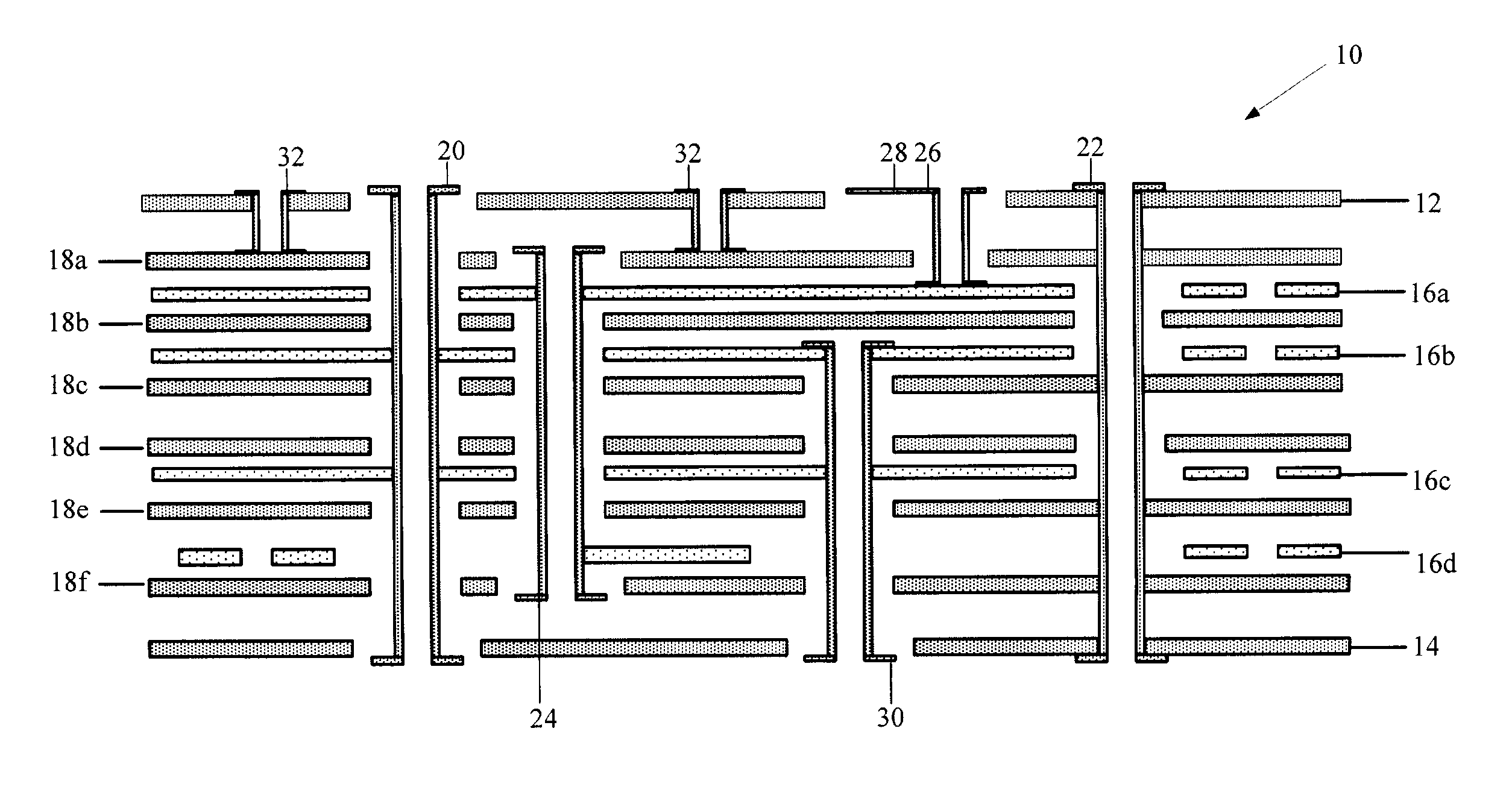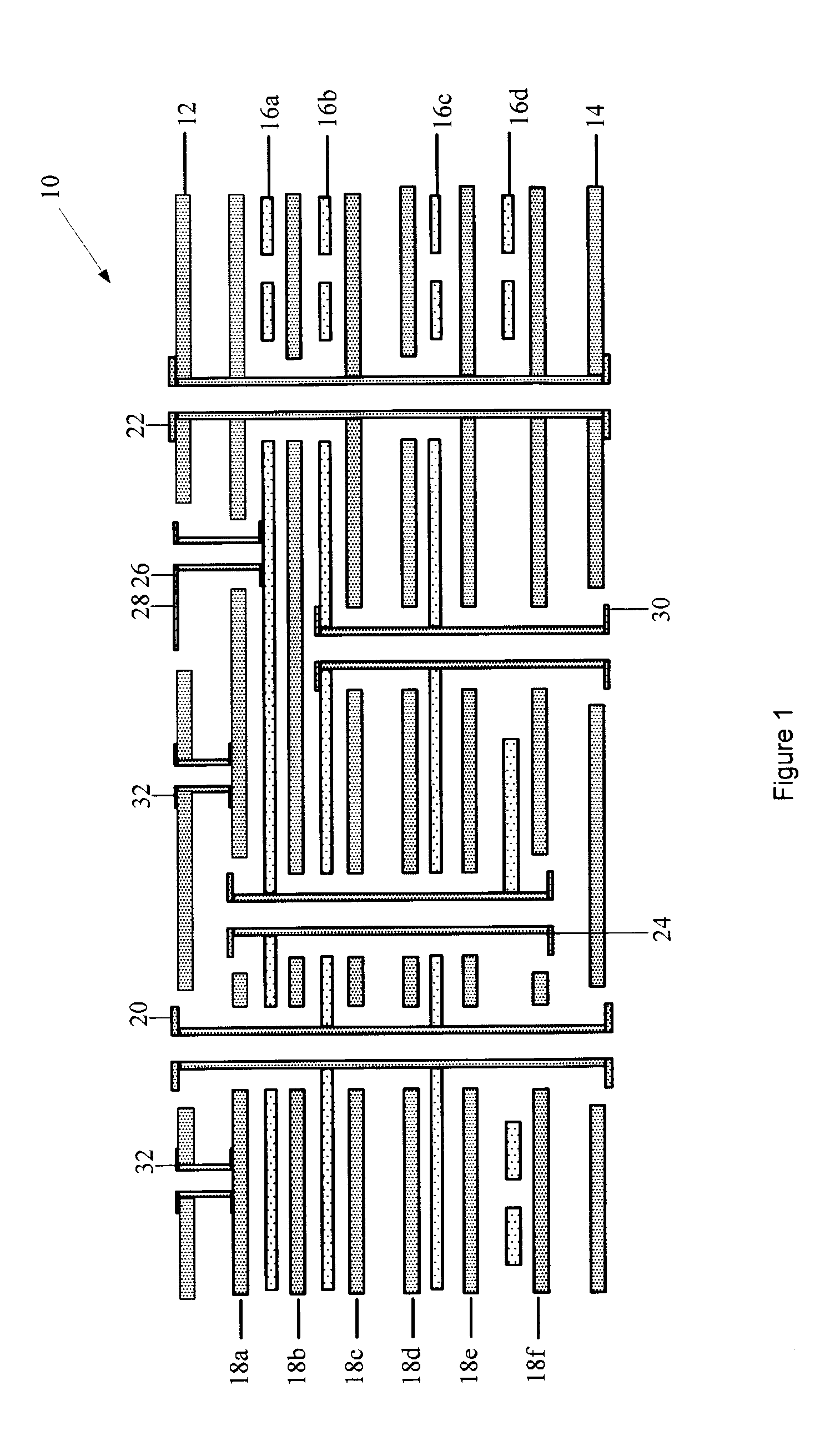Techniques for reducing the number of layers in a multilayer signal routing device
a signal routing and multi-layer technology, applied in the direction of printed element electric connection formation, printed circuit non-printed electric component association, conductive pattern formation, etc., can solve the problems of adversely affecting the performance of signals propagating therethrough, limited number of electrical signals that can be routed between electronic components mounted on a single signal layer circuit board, and severe limitations of single signal layer circuit boards with regard to the number of electrical signals. , to achieve the effect of reducing the number of layers, efficient routing
- Summary
- Abstract
- Description
- Claims
- Application Information
AI Technical Summary
Benefits of technology
Problems solved by technology
Method used
Image
Examples
Embodiment Construction
)
[0037]At the outset, it is helpful to refer to the microvia-based techniques for reducing the number of layers in a multilayer signal routing device and the power / ground-based techniques for reducing the number of layers in a multilayer signal routing device as have been substantially described in the above-referenced U.S. Provisional Patent Application No. 60 / 212,387, the above-referenced U.S. patent application Ser. No. 09 / 651,188 (now U.S. Pat. No. 6,388,890), the above-referenced U.S. patent application Ser. No. 10 / 101,211, the above-referenced U.S. patent application Ser. No. 10 / 126,700, the above-referenced U.S. patent application Ser. No. 10 / 326,123, and the above-referenced U.S. patent application Ser. No. 10 / 326,079, all of which have been incorporated by reference herein in their entirety.
[0038]The above-referenced microvia-based and power / ground-based techniques are certainly beneficial for reducing the number of layers in a multilayer signal routing device. However, the...
PUM
| Property | Measurement | Unit |
|---|---|---|
| Electrical conductivity | aaaaa | aaaaa |
| Electrical conductor | aaaaa | aaaaa |
| Efficiency | aaaaa | aaaaa |
Abstract
Description
Claims
Application Information
 Login to View More
Login to View More - R&D
- Intellectual Property
- Life Sciences
- Materials
- Tech Scout
- Unparalleled Data Quality
- Higher Quality Content
- 60% Fewer Hallucinations
Browse by: Latest US Patents, China's latest patents, Technical Efficacy Thesaurus, Application Domain, Technology Topic, Popular Technical Reports.
© 2025 PatSnap. All rights reserved.Legal|Privacy policy|Modern Slavery Act Transparency Statement|Sitemap|About US| Contact US: help@patsnap.com



